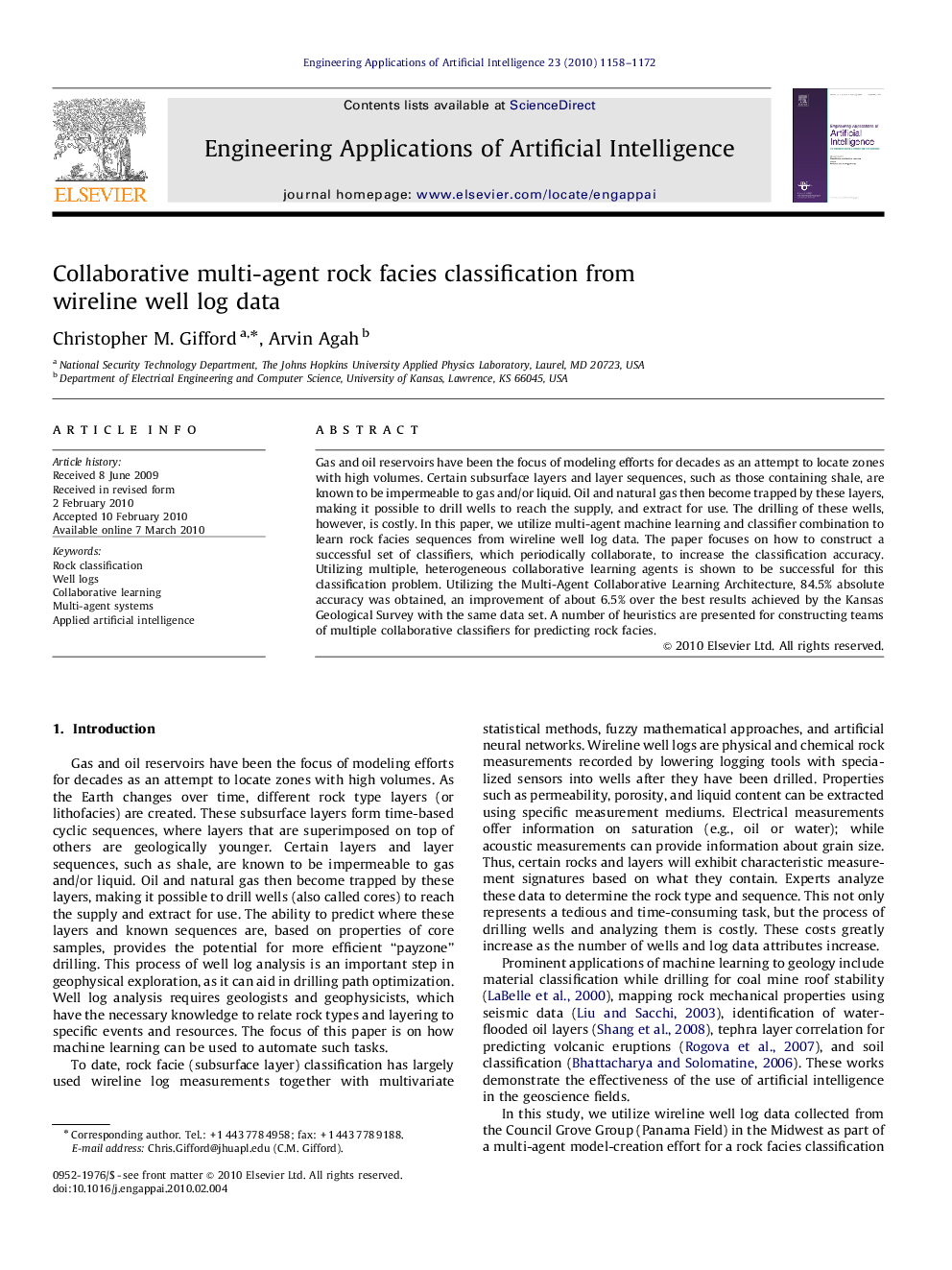| Article ID | Journal | Published Year | Pages | File Type |
|---|---|---|---|---|
| 381559 | Engineering Applications of Artificial Intelligence | 2010 | 15 Pages |
Gas and oil reservoirs have been the focus of modeling efforts for decades as an attempt to locate zones with high volumes. Certain subsurface layers and layer sequences, such as those containing shale, are known to be impermeable to gas and/or liquid. Oil and natural gas then become trapped by these layers, making it possible to drill wells to reach the supply, and extract for use. The drilling of these wells, however, is costly. In this paper, we utilize multi-agent machine learning and classifier combination to learn rock facies sequences from wireline well log data. The paper focuses on how to construct a successful set of classifiers, which periodically collaborate, to increase the classification accuracy. Utilizing multiple, heterogeneous collaborative learning agents is shown to be successful for this classification problem. Utilizing the Multi-Agent Collaborative Learning Architecture, 84.5% absolute accuracy was obtained, an improvement of about 6.5% over the best results achieved by the Kansas Geological Survey with the same data set. A number of heuristics are presented for constructing teams of multiple collaborative classifiers for predicting rock facies.
